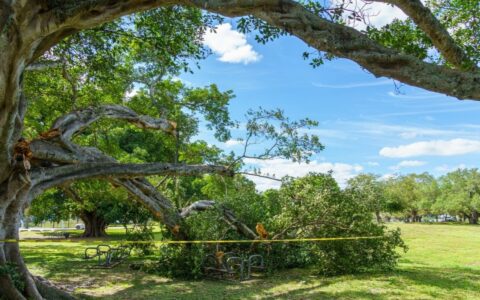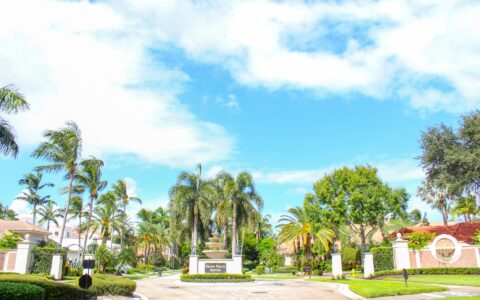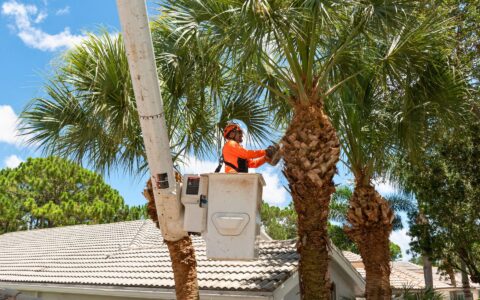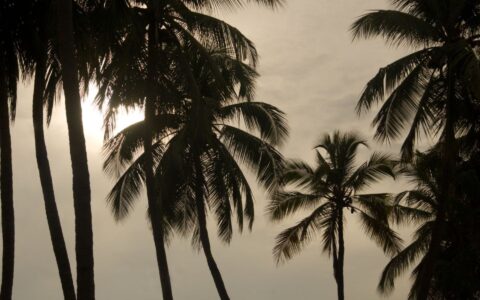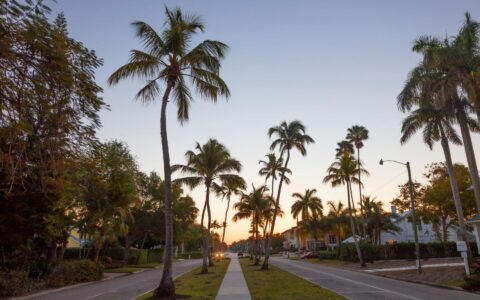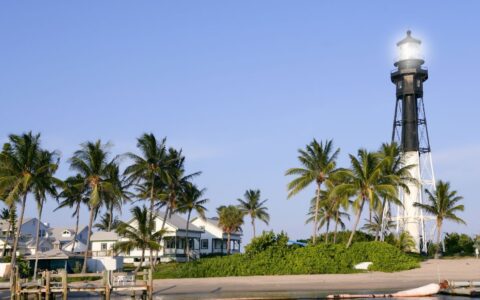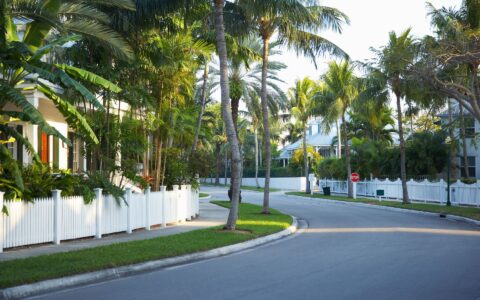Although winter temperatures in Boca Raton, West Palm Beach, Fort Lauderdale, and other parts of South Florida rarely drop below 50 degrees Fahrenheit, those colder temperatures still have an effect on plants, trees, and lawns. And sometimes, we get an unexpected cold front that brings freezing weather. Learn what to expect when the temperature falls in winter …
FAQs: Cold Weather & Trees
How much water do trees and plants need in winter?
How much to water plants during South Florida’s winter will depend on several things, such as:
- How much rain we’ve had in the preceding months
- What kind of plants you have
- How recently the plants were installed
- How low the temperature drops and how long it stays cold
For example, if there was ample rain in fall and early winter, we recommend that you stop watering your established lawn, landscape plants, and shrubs until it warms up in spring. Mature trees can also go without supplemental watering. But recently-planted trees, shrubs, and landscape plants will still benefit from additional water throughout the winter.
Do trees and shrubs lose their leaves in winter in South Florida?
Not really. Trees in South Florida generally don’t go fully dormant in winter, so they don’t lose all of their leaves. Some deciduous trees, such as oaks, may lose a few leaves (about 25% is normal), particularly if we have uncharacteristically cold weather.
Why are my tree’s leaves turning yellow in winter?
If you notice leaves turn yellow or even start to fall off during the colder months, it’s usually because they’ve received too much water. Plants need to dry out a bit between waterings during the winter. Cut back on water. If that doesn’t help, there could be another underlying cause that should be inspected by a Certified Arborist.
Do trees and shrubs continue growing throughout the winter?
Most trees and shrubs in South Florida only grow a little bit during the colder winter months. Although they’re not dormant, they’re not actively putting out new growth either. That means plants will look more or less the same throughout the entire winter. If they were lush and healthy at the end of summer, they should still look good when spring arrives.
However, trees, shrubs, and other plants that were stressed in summer or fall by improper watering, pests, diseases, or other environmental factors will continue to look stressed until they start growing again in spring.
If my tree isn’t growing in winter, how will I know if it’s healthy?
No matter the time of year, there are certain signs that indicate your tree isn’t healthy. It’s time to call in a Certified Arborist if you notice any of the following signs:
- Discolored leaves
- Evidence of pests, such as holes or ragged edges on leaves
- Spots or fuzzy growths on leaves
- An excessive amount of defoliation compared to previous winters
Can I plant trees in winter?
Yes, winter is a good time to plant trees in South Florida.
Can I trim or prune trees in winter?
Yes, you can trim trees and shrubs at any time of year in South Florida.
Should I fertilize trees and shrubs in winter?
Wait until late winter (February or March) to fertilize. Because they’re not growing very much, trees and shrubs won’t absorb most of the extra nutrients from fertilizer during the colder winter months.
However, if you have sandy soil, all of your plants will benefit from adding organic matter, such as compost. You can spread a 2 to 3-inch layer around your trees (keeping it well away from the trunk) or incorporate it into the soil when installing new trees or shrubs. This will help retain moisture, encourage the growth of beneficial microorganisms, and make more nutrients available to your plants.
Do I need to protect trees or shrubs if temperatures dip lower than normal?
The average low during January (the coldest part of the year in South Florida) is only around 60 degrees. But, sometimes, temperatures can dip lower than that.
According to the National Weather Service, South Florida winters are usually dry and warm during La Niña conditions, while El Niño conditions usually bring cool and wet conditions to our region. Overall, the chance of a hard freeze that would affect tender plants is only about 10-30%, at most.
But when night-time lows do drop into the lower 40s or below, tropical and subtropical plants may need additional protection, especially if the cold weather arrives suddenly. While you can’t do much to protect large trees and palms (which likely won’t need protection anyway), smaller ornamental trees and shrubs can be covered with a lightweight fabric, such as sheets, quilts, or commercial frost cloths. Make sure the cloth extends all the way to the ground to trap heat radiating from the soil surface. Avoid using plastic as it can damage any parts of the plant that it touches during a frost event.
I’ve heard that iguanas fall out of trees in winter. Is that really true?
Yes, when temperatures fall into the 40s, cold-blooded iguanas slow down and become immobilized, lose their grip on branches, and often fall out of the tree. Thankfully, this paralysis effect is only temporary. They’re not “frozen” or dead and will wake up and walk away when they warm up.
Call Sherlock for quality tree services
Whether you're looking for specific tree care services, such as palm trimming, tree removal, or disease treatments, or would like one of our Arborists to examine your trees to identify any issues and recommend options, we're always here for you! Just give us a call at 954-788-4000 to set up an appointment.
SEE MORE ARTICLES
Looking for more?
We've got you covered with a monthly newsletter full of tips, resources, updates, how-to's, and other helpful information about trees and landscapes in South Florida!


